Transformation
Jan 17, 2023
The Personalization Playbook: A Guide to Data-Driven Personalization at Scale

As beneficial as business growth is, sometimes growing businesses lose the critical ability to make every customer experience feel personal, resulting in lost revenues and the perception of a business that is out of touch with the needs of its customers. In the past, this may have motivated organizations to limit their growth to retain strong branding and customer relationships. Today, however, modern marketing technology provides a way to scale businesses to their full potential while still maintaining a close, personal customer experience with every customer. This is what we call personalization at scale.
Personalization at Scale
The road to personalization at scale starts with envisioning a personalization roadmap. What current state personalization technology exists in your firm? Are you committed to creating positive personalized experiences through trust and dialogue with customers? Answers to questions like these will help guide your firm to the right tools, strategies, and vendors to create your ideal customer experience—one where data-driven decision-making can allow every customer to be met with the right message, at the right place, at the right time, no matter how much your business scales. Accomplishing this requires thoughtful orchestration of a MarTech architecture like the one below:

To translate the graphic above into straightforward terms, personalization is all about gathering the right information from your customers, using it to learn more about who they are and what they care about, delivering the right content and communications at the right time based on what you now know about them, and finally - using what you ‘ve learned as an organization to do it all it over again, but with more marketing precision each time.
Delivering such a customer experience is possible through careful manual analysis and planning for small customer bases, but many of today’s businesses grow too quickly and reach too broad of an audience to rely on headcount-driven marketing tasks. This is where a personalization technology stack can be a difference maker in your business.
Ideally, building a personalization technology stack allows for the automation of the three most involved tasks in the reference architecture above: sourcing inputs, making decisions, and producing outputs. If technology can handle these tasks, supporting marketing teams are then freed up to analyze past and current campaign results and make well-informed decisions about future ones. We’ll spend most of this blog focusing on the specific components of the personalization technology stack, but there is no doubt that dynamic marketing decision-makers are still essential to the success of any marketing organization, regardless of the technology available.
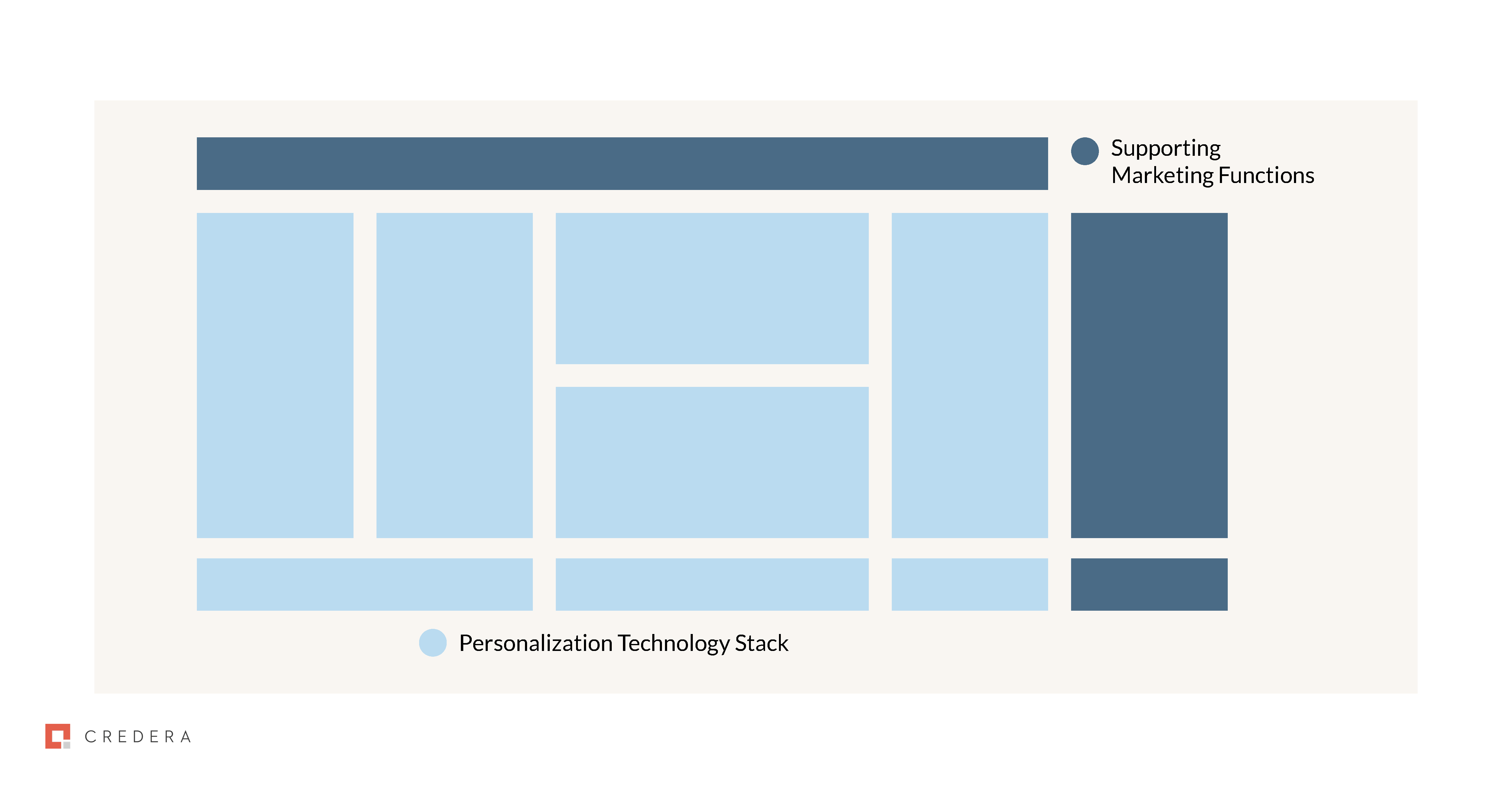
Segmenting the tasks that are managed by the personalization technology stack from the functions requiring human input and decision-making allows us to define two distinct categories in the reference architecture
Now, let’s narrow our focus to the components of the personalization technology stack. An effective personalization technology stack should include three primary components:
A data ingestion and unification stack for streamlined data inputs
A synchronized decisioning engine
A targeted omni-channel output layer
Throughout the rest of this blog post, we’ll walk through the essential role that each of these three components plays in creating a personalized customer experience. Let’s break down each phase of this framework.
1. THE DATA INGESTION AND UNIFICATION STACK FOR STREAMLINED DATA INPUTS
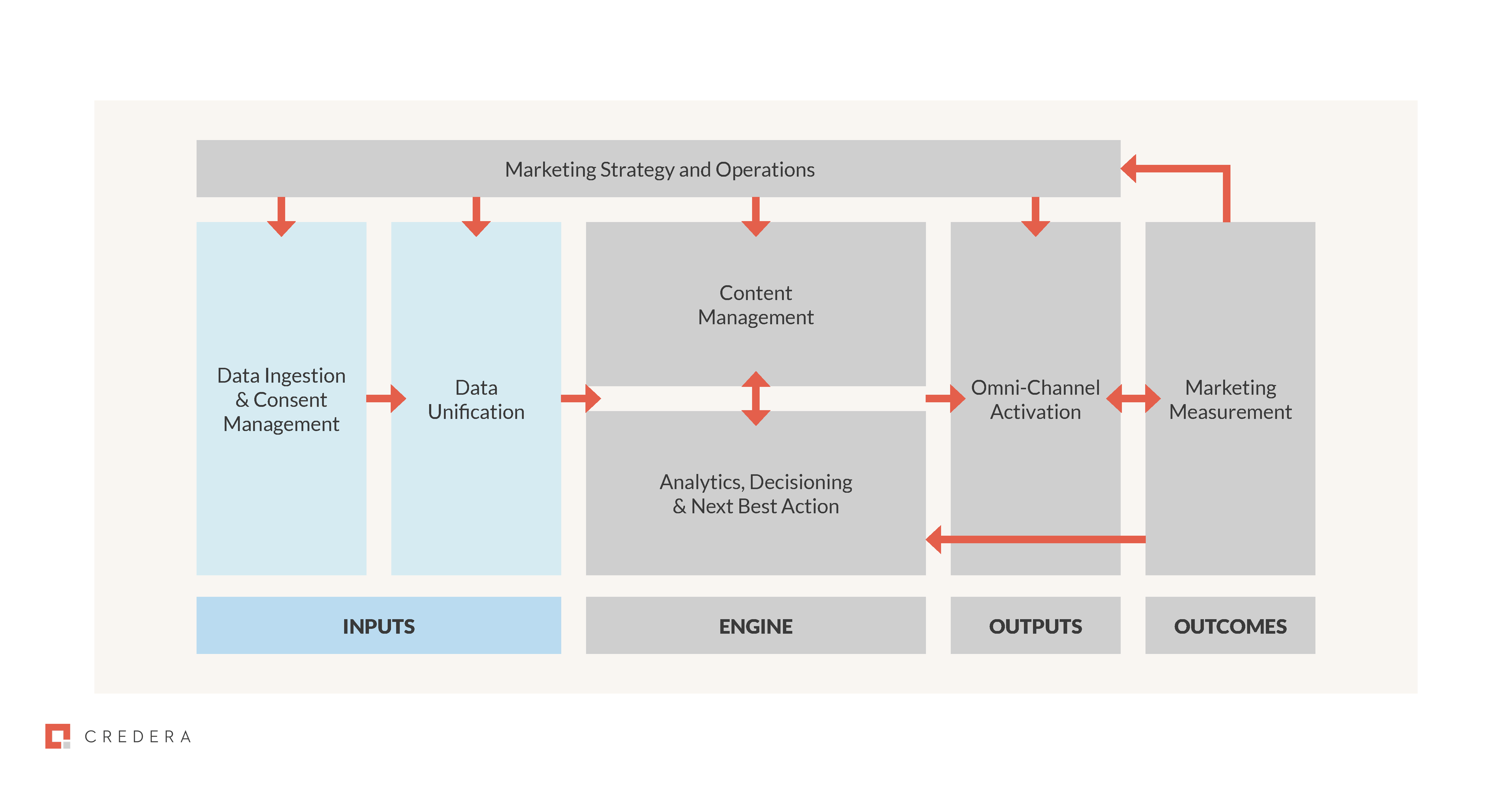
The personalization framework begins with tools to manage inputs – collecting data from across the web and unifying all sources into a single data stream.
With data coming from thousands of places and governing bodies tightening data regulations, it can be intimidating to collect customer data at scale. Thankfully, sophisticated data ingestion and consent management tools have adapted to meet this challenge, making it easier than ever to gather valuable customer first-party data in the post-third-party cookie era. These tools then unify the data to create a single stream of data input for your decisioning engine. This means millions of data points can be filtered to narrow down the inputs your company needs most.
2. A SYNCHRONIZED DECISIONING ENGINE
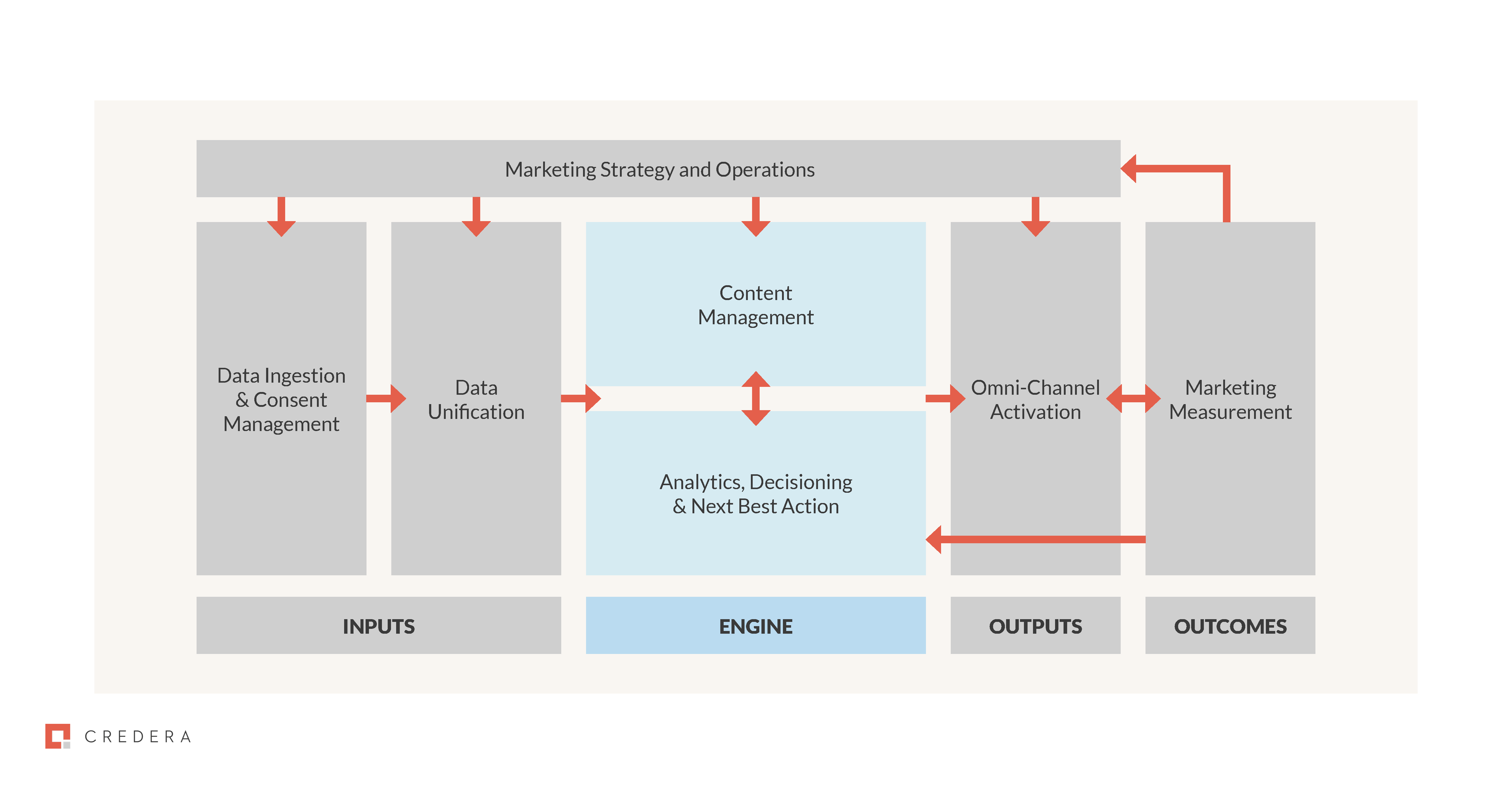
Content management and data decisioning tools form the “engine” of a personalization stack, transforming raw data inputs into actionable customer insights and managing dynamic content for later use.
The heartbeat of an effective personalization process is the decisioning engine. At a high level, decisioning engines transform raw data inputs into readily available customer profiles and then recommend next-best actions and content for delivery.
Data transformation takes place via synchronization between customer data platforms (CDPs), identity managers (IDMs), and data management platforms (DMPs). These tools work together to unify data into single views of customers/leads, segment anonymous prospects into audiences, analyze data through dashboards and advanced tools, and inform next-best actions for customers. You can learn more about the important differences between these tech stacks.
At the same time, a digital asset manager (DAM) and content management system (CMS) can work in tandem to store and manage your content, ensuring it’s readily available for creating the personal experience your customers crave. DAMs manage dynamic assets designed for flexibility and reuse in a single content repository with a robust taxonomy structure, and CMSs enable personalization capabilities that allow you to serve the right personalized content to users. To know which content is right for a user, it is important to have a taxonomy to tag assets and content in both a DAM and CMS. This ensures that dynamic content is highly available across all channels.
The output of an effective personalization engine is a prioritized set of customer profiles with defined attributes and recommended marketing and content strategies to target them.
3. A TARGETED OMNI-CHANNEL OUTPUT LAYER
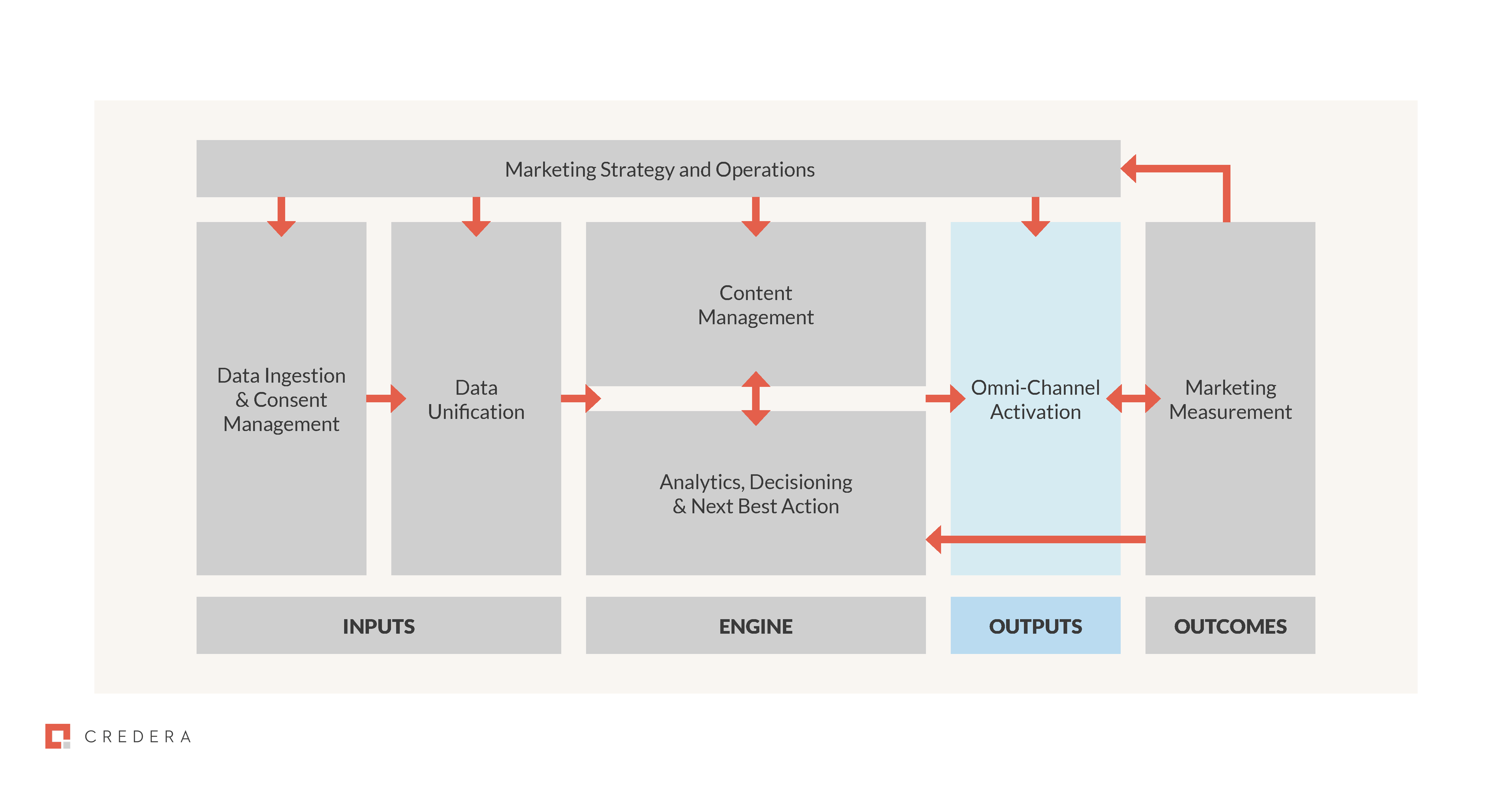
With customer insights and intelligent content in hand, an omni-channel output layer completes the personalized experience by delivering campaigns through customers’ preferred marketing channels.
Armed with powerful customer data insights and dynamic content, your business can utilize omni-channel activation to reach your customers with meaningful campaigns. By pairing business priorities with the personalization architecture, you can deliver personalized content based on next-best actions across all existing channels—email, web, mobile, social, search, and more.
Omni-channel marketing platforms automate content delivery to ensure that not only are your customers receiving communication via their preferred method - they are receiving it exactly when it will be most effective. All delivered campaign outcomes are captured, and this data can be used to inform future interactions as part of your personalization ecosystem.
This results in a personalization stack that becomes more effective at knowing your customer base and your business as time goes on.
Supporting Marketing Functions
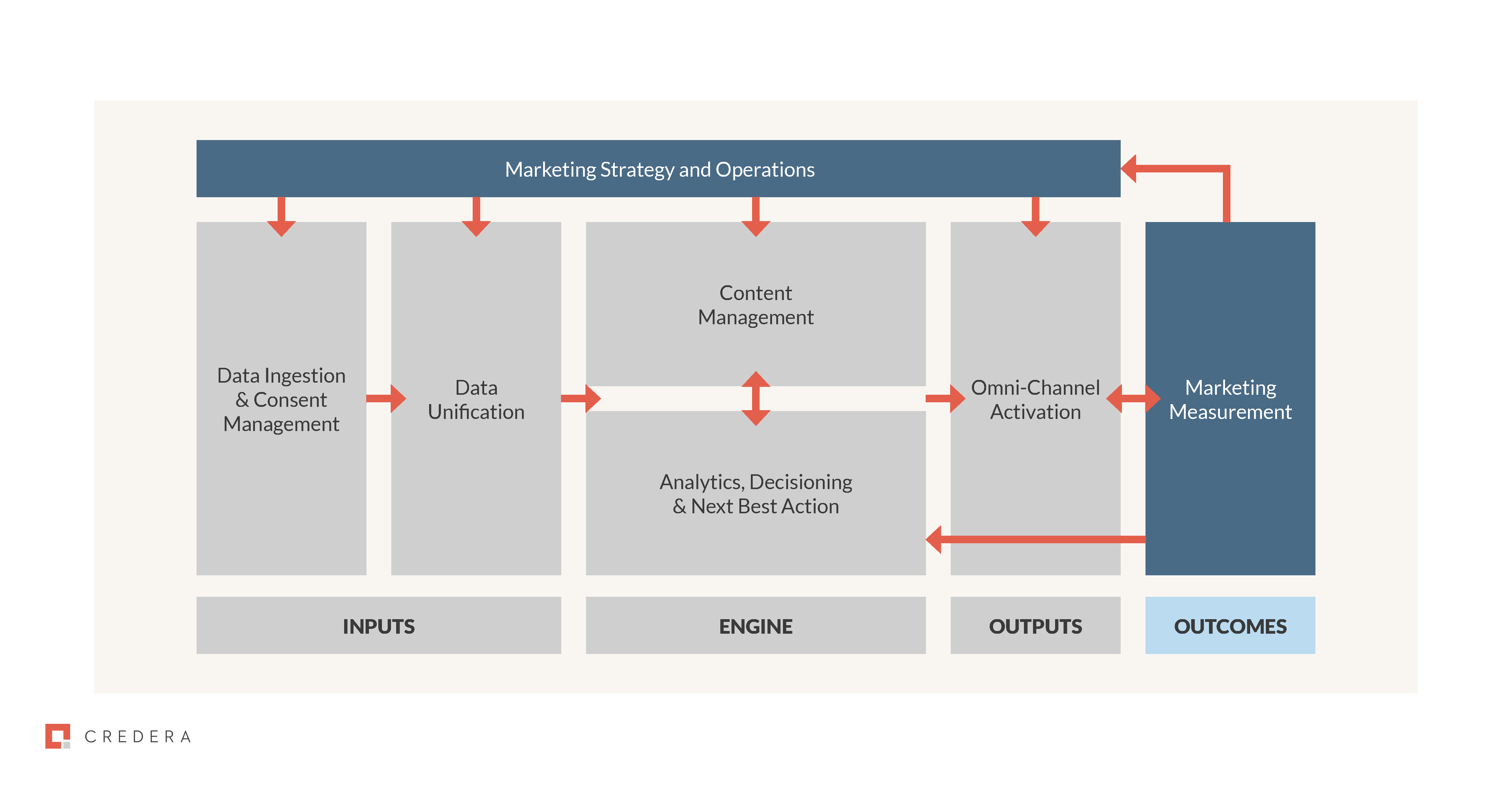
While a personalization stack handles the heavy data lifting, marketing and strategy teams can utilize campaign data toreprioritize marketing objectives and plan new campaigns that align with targeted customer segments.
With a robust personalization technology stack in place, marketing teams are freed from the manual guesswork of traditional marketing data analysis and can spend their time using rich data from campaign outcomes to develop strategy for future campaigns. This creative exercise, managed outside of the technology stack by the human decision-makers in your business, can feed back into your personalization strategy and inform changes throughout the personalization lifecycle, continually optimizing ad spend over time.
Using Personalization to Create Customer Value
Bringing it all together, an effective personalization technology stack can provide business owners with excellent solutions to the impossible challenge of creating personalized experiences while trying to serve thousands of customers. Where scaling your business once meant losing the ability to create personalized customer engagement, growth now provides the opportunity to invest in and design a customer personalization strategy that makes customers feel even more known and cared for than they had been previously. Equipped with the right tools for gathering data inputs, transforming inputs into actionable data, and delivering the right content at the right time, any business at any size can make customer interactions more effective, and most importantly, extremely personalized.
Interested in seeing how Credera's MarTech experts can assess your personalization ecosystem and provide a strategy for driving more personal customer experiences and a modern marketing transformation? Reach out to one of our MarTech experts at findoutmore@credera.com for more information.
Contact Us
Ready to achieve your vision? We're here to help.
We'd love to start a conversation. Fill out the form and we'll connect you with the right person.
Searching for a new career?
View job openings
